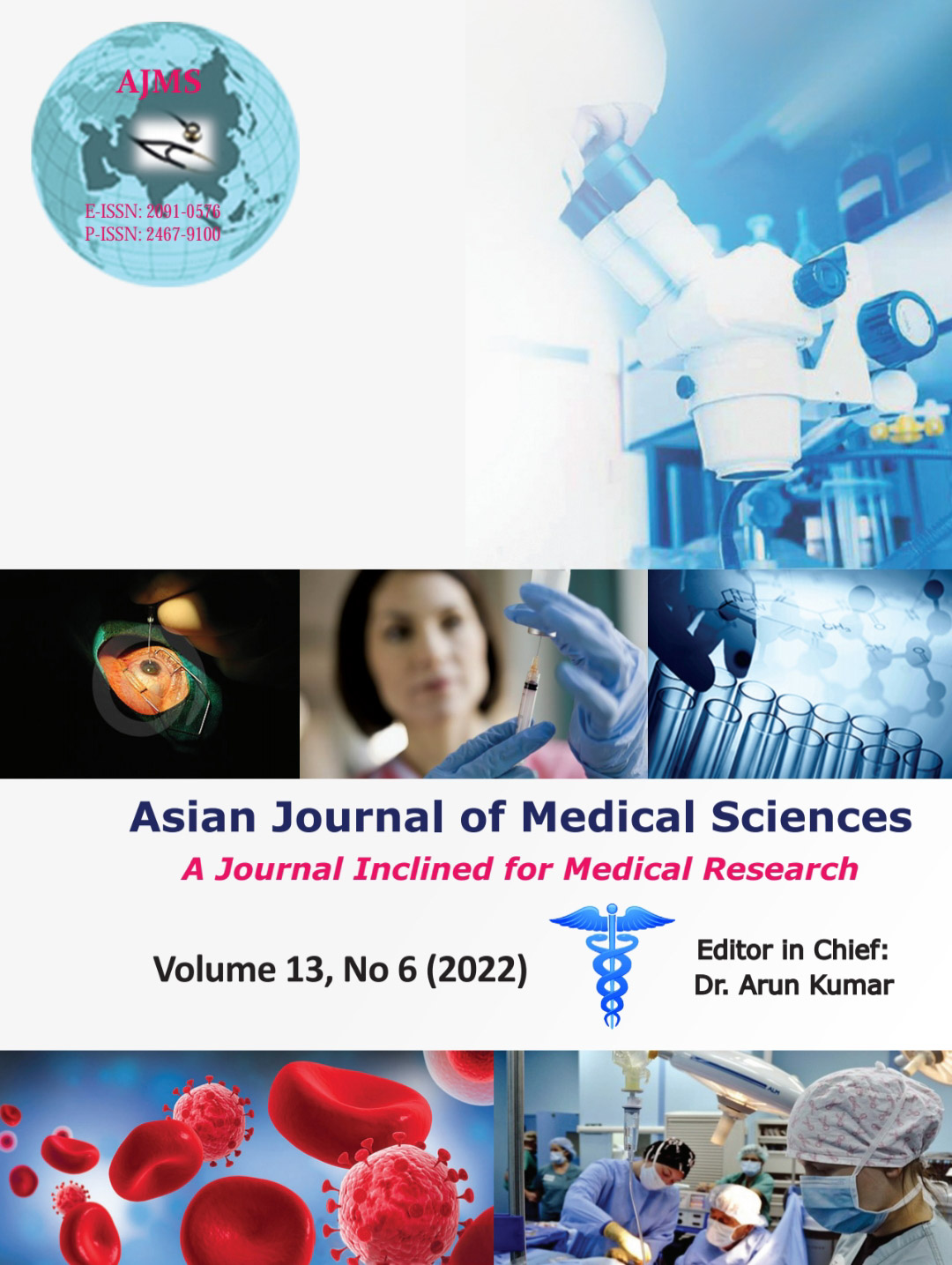Examination of the primary fraction of hemoglobin in individuals having sickle cell disease using high-performance liquid chromatography
Keywords:
Fetal hemoglobin, Hemoglobin A2, Hemoglobinopathy, high-performance liquid chromatography, Sickle cell diseaseAbstract
Background: Hemoglobinopathies refer to a range of diseases, in which the hemoglobin (Hb) molecule’s synthesis or structure is aberrant. It is passed down through the generations (inherited). Hb C illness, Hb S-C disease, sickle cell anemia, and thalassemia are all part of this group. Hemoglobinopathies are the most frequent genetically inherited red blood cell condition on the planet. Hb variant screening and precise identification have become more crucial in the antenatal diagnosis and prevention of Hb diseases.
Aims and Objectives: Hb analysis, cation exchange high-performance liquid chromatography (HPLC) has emerged as the method of choice. This research was brought up to diagnose numerous hemoglobinopathies and also to measure distinct Hb fractions.
Materials and Methods: Four hundred and seventy participants were examined for hemoglobinopathies in the investigation. Different fractions of Hb were compared to patients with normal Hb after diagnosis.
Results: Normal HPLC, SCA (Hb SS), sickle cell trait (SCT), and -thalassemia trait were discovered in 110 (23.4%), 130 (27.6%), 210 (44.6%), and 20 (4.2%) individuals, respectively, out of 470 patients. Rare hemoglobinopathies such as tenacious fetal Hb (PFH), Hb E, Hb D-Punjab, and Hb Q India accounted for 15 (3.1%) of the sufferers. Patients with SCA had a mean percent of Hb S, Hb F, Hb A, and Hb A2 of 81.6±74.6, 22.9±13.9, 3.1±6.1, and 2.5±1.02, respectively. Hb F was 22.9±13.9% on average, which was much higher than normal and SCT. A high HbA2 level (>3.5%) indicated the existence of the β-thalassemia trait.
Conclusion: In the included section of the population, SCD is the most common kind of hemoglobinopathy, both homozygous and heterozygous. Hb F concentrations are observed to be elevated in SCA patients, and it is thought to be a key element in protecting patients from problems. Raised Hb A2, which indicates the presence of the β-thalassemia trait, was also discovered in this area, and it is suspected when the value is >3.7%. Cation exchange HPLC is ideal for routine hemoglobinopathies research due to its high resolution, short test time, and precise quantification.
Downloads
Downloads
Published
How to Cite
Issue
Section
License
Copyright (c) 2022 Asian Journal of Medical Sciences

This work is licensed under a Creative Commons Attribution-NonCommercial 4.0 International License.
Authors who publish with this journal agree to the following terms:
- The journal holds copyright and publishes the work under a Creative Commons CC-BY-NC license that permits use, distribution and reprduction in any medium, provided the original work is properly cited and is not used for commercial purposes. The journal should be recognised as the original publisher of this work.
- Authors are able to enter into separate, additional contractual arrangements for the non-exclusive distribution of the journal's published version of the work (e.g., post it to an institutional repository or publish it in a book), with an acknowledgement of its initial publication in this journal.
- Authors are permitted and encouraged to post their work online (e.g., in institutional repositories or on their website) prior to and during the submission process, as it can lead to productive exchanges, as well as earlier and greater citation of published work (See The Effect of Open Access).




